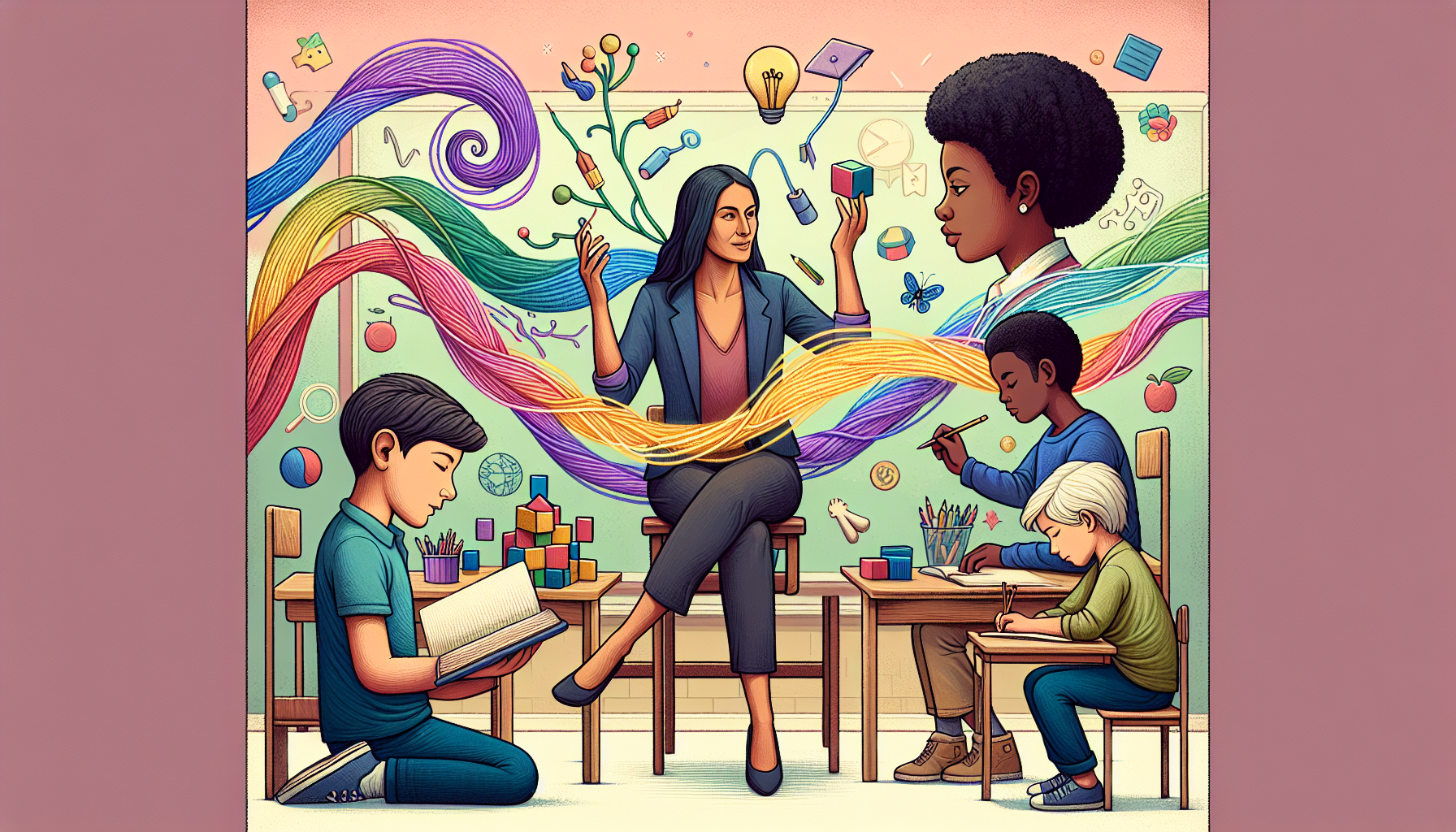It’s no secret that everyone learns differently, and figuring out the best way to absorb information can feel like cracking a code. If you’ve ever struggled to connect with traditional teaching methods, you’re definitely not alone. Many people just don’t fit into one neat little box when it comes to learning styles.
But here’s the good news: by exploring various learning strategies, you can find what works for you or your students. Stick around, and we’ll dive into the fascinating world of visual, auditory, kinesthetic, and more, helping you tailor your approach for better understanding and retention.
We’ll also chat about the benefits of catering to these different learning styles and share some handy tools to make the journey smoother. So, whether you’re a teacher, a student, or just curious, you’re in the right place!
Key Takeaways
- Understanding learning styles—visual, auditory, kinesthetic, and reading/writing—can enhance teaching effectiveness.
- Identify student learning styles through surveys, observation, and self-reflection.
- Visual learners benefit from aids like slides, diagrams, and mind maps.
- Support auditory learners with discussions, podcasts, and rhythmic techniques.
- Engage kinesthetic learners through hands-on activities, experiments, and role-plays.
- Utilize extensive reading materials and writing assignments for read/write learners.
- Using a mix of teaching methods caters to all styles, creating a dynamic learning environment.

Catering to Different Learning Styles: An Overview
When it comes to education, everyone learns a bit differently, right? Understanding these differences is key to effective teaching and learning. By catering to various learning styles, teachers can make their lessons more engaging and tailored for every student.
Research suggests that there are a range of learning styles, with models like VARK categorizing learners into four main types: visual, auditory, kinesthetic, and reading/writing. But here’s the catch: most people are a mix of these styles, often having a primary preference.
Knowing how to adapt teaching strategies not only helps meet the needs of individual students but can enhance overall classroom dynamics. This doesn’t just benefit students; it can reduce frustration for teachers as well.
Identifying Different Learning Styles
So, how do you figure out which learning style fits your students best? While there’s no one-size-fits-all solution, here are a few practical methods to identify different learning styles.
First off, consider conducting a survey. A simple questionnaire asking about preferences can give you useful insights. There are several resources online where you can find ready-made surveys for this purpose.
Secondly, observation is key. Pay attention to how students engage with different teaching methods. Do they thrive during group discussions, enjoy hands-on activities, or do they prefer reading material over other types of instruction?
Lastly, encourage students to self-reflect. Sometimes, they might not even realize what works best for them until prompted to think about it. A guided discussion about their learning experiences can reveal a lot.
Visual Learning Strategies
Visual learners grasp information best through images, diagrams, graphs, and other visual tools. If you want to cater to this style, here are some effective strategies.
Start by incorporating visual aids into your lessons. Think about using slides, infographics, and videos. These resources can break down complex information into digestible formats.
Color-coding notes or using mind maps can also boost retention for visual learners. This way, they can visualize connections between concepts, making it easier to remember details.
Lastly, consider utilizing tools like content mapping to visually organize topics. Not only does this cater to visual learners, but it also clarifies your lesson plan for everyone in the classroom.
Auditory Learning Techniques
For auditory learners, listening is the name of the game. These learners thrive in environments rich with verbal communication. Here are some techniques to support their learning style.
Incorporate discussions and lectures where students can engage actively. Encourage them to listen to podcasts or audiobooks related to the subject matter.
Also, using rhymes or chants to reinforce concepts can be surprisingly effective. Turning information into a catchy tune can help these learners remember facts much more easily.
Finally, consider pairing students for discussions. Collaborative learning allows auditory learners to vocalize their thoughts while also benefiting from hearing others’ perspectives.

Kinesthetic Learning Approaches
Kinesthetic learners thrive through hands-on experiences and physical activities.
To engage these learners effectively, you might want to incorporate more movement into your lessons.
For example, conducting science experiments allows students to physically interact with materials, making concepts more concrete.
Field trips can also provide experiential learning environments that resonate with kinesthetic learners.
Consider using role-plays or simulations, especially in subjects like history or drama, to engage these learners actively.
Additionally, incorporating tools like building blocks or arts and crafts can foster creative expression while reinforcing new concepts.
Read/Write Learning Methods
Read/write learners prefer to engage with text as a primary means of learning.
To support these students, ensure assignments include extensive reading materials like articles, books, or comprehensive notes.
Encourage them to keep journals where they can summarize lessons in their own words.
Incorporating essays or research papers into your curriculum helps solidify their understanding while differentiating their instruction.
Utilizing online resources like blogs or forums where they can interact in writing also caters to their preferences.
Don’t underestimate the power of flashcards; they’re a fantastic tool for memorization and can be easily customized for various topics.
Integrating Multiple Learning Styles in Teaching
Finding a balance between different learning styles can create a dynamic classroom environment.
Consider employing a blended approach, mixing visual aids, discussions, hands-on activities, and reading materials.
For instance, when teaching a new topic, start with a visual presentation, follow it up with a group discussion, and then allow students to apply their knowledge through a practical task.
Using mixed media resources can also cater to the varying preferences among your students.
Encourage collaboration by assigning group projects where each student can capitalize on their strengths while learning from peers.
This not only builds a sense of community but also helps students appreciate diverse ways of learning.

Benefits of Catering to Different Learning Styles
Catering to different learning styles brings multiple advantages to both teachers and students.
First and foremost, recognizing that students learn differently can significantly boost their engagement. When lessons resonate with their preferred styles, students are likely to show more enthusiasm and participate actively.
Additionally, this approach can help in reducing frustration. When students struggle with a teaching method that doesn’t match their learning style, it can lead to disengagement. Adjusting your methods can help alleviate this issue.
Furthermore, accommodating various learning styles can enhance retention. By presenting information in multiple ways, students are more likely to remember what they’ve learned, making for a more effective educational experience.
Finally, embracing a variety of teaching strategies fosters an inclusive classroom environment. Students feel valued and understood, which can build their confidence and promote a positive learning atmosphere.
Challenges in Addressing Diverse Learning Styles
While catering to different learning styles is beneficial, it also comes with its own set of challenges.
One major hurdle is time constraints. With limited class time, it can be tough to design lessons that effectively target every learning style without compromising depth.
Another difficulty may arise from differing levels of student engagement. Some students may benefit from certain methods, while others still struggle. This variability can necessitate constant adjustment.
Additionally, there’s often a lack of training or resources for teachers. Not everyone is equipped with the knowledge or tools to identify and implement diverse strategies effectively.
Finally, it can become overwhelming to keep track of the multitude of approaches needed. Teachers might find themselves juggling many techniques, which can lead to burnout if not managed well.
Tools and Resources for Catering to Learning Styles
There are a plethora of tools and resources available to help accommodate diverse learning styles in the classroom.
Start with online quizzes or questionnaires such as the VARK learning style questionnaire to assess students’ preferences.
Consider using educational platforms like Kahoot! or Quizizz, which offer interactive quizzes that can cater to various learning styles through gamified learning.
Visual learners may benefit from graphic organizers, while auditory learners can explore platforms like Audible for audiobooks and podcasts.
Additionally, free resources like TeacherVision and Edutopia provide lesson plans, activities, and teaching strategies suited for diverse learning preferences.
Conclusion: Embracing Diverse Learning Approaches
To wrap it all up, embracing diverse learning approaches is essential for fostering an effective educational environment.
Recognizing that every student is unique encourages teachers to innovate and adapt their teaching strategies.
When we tailor our methods to meet the varied needs of learners, we enhance engagement, retention, and overall success.
So, let’s keep experimenting with different tools and techniques, using feedback to refine our approaches over time.
After all, the ultimate goal is to create a classroom where every student feels empowered to learn and grow.
FAQs
The main learning styles include visual, auditory, kinesthetic, and read/write. Each style represents a different way individuals process information, influencing their study habits and preferences for learning environments.
Teachers can integrate various teaching methods such as visual aids, group discussions, hands-on activities, and written materials to address the diverse learning styles of their students effectively.
Catering to different learning styles enhances student engagement, retention, and academic performance. It also promotes inclusivity, ensuring all students have equal opportunities to comprehend and excel in their studies.
Challenges include limited resources, potential confusion in methods, unequal student participation, and the difficulty of assessing effectiveness across different styles. Balancing varied approaches requires careful planning and flexibility.
